What does Ada Lovelace mean to you?
Celebrating Ada Lovelace Day 2020 with six women computer scientists.
12 October 2020
Reading time: 18 minutes
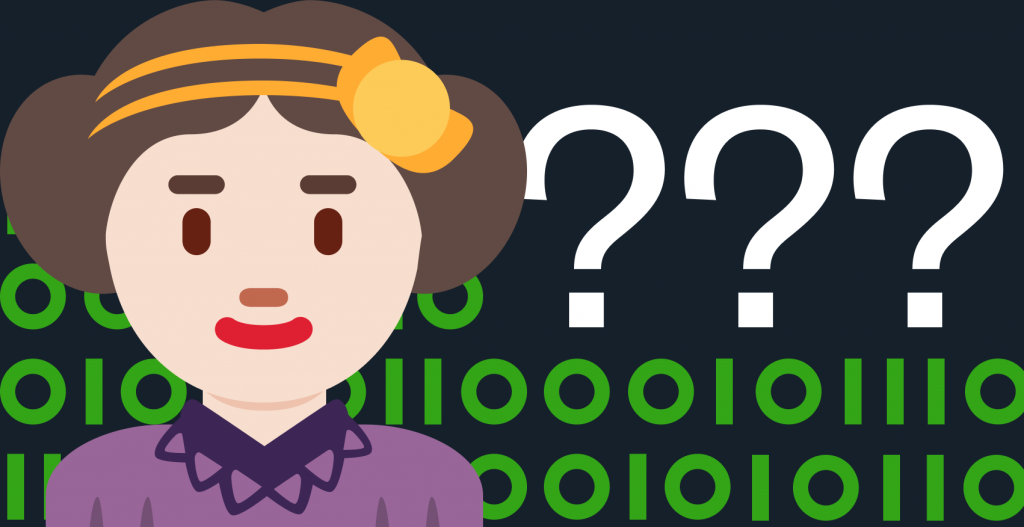
Ada Lovelace Day is an opportunity to celebrate the achievements of the world’s first (female) computer programmer. But Ada Lovelace is only one of many women who have determined the direction of travel of computing.
This year, we want to amplify the voices and stories of less celebrated women who carry out indispensable work with computational technologies. The six remarkable women interviewed here are from markedly different backgrounds. Some names may be familiar, but what’s certain is that their critical outlook, insights and personal achievements are under-represented in what is still a predominantly male-dominated field.
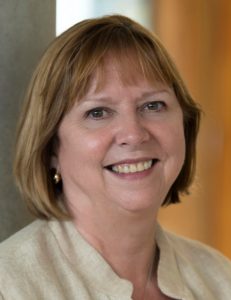 Dame Wendy Hall: I’ve been a Professor since 1994. I was the first woman Professor in Engineering at the University of Southampton. There weren’t many of us, and there were even fewer female Computing Science professors. There still aren’t very many. It’s lonely being one of the only female professors in a discipline.
Dame Wendy Hall: I’ve been a Professor since 1994. I was the first woman Professor in Engineering at the University of Southampton. There weren’t many of us, and there were even fewer female Computing Science professors. There still aren’t very many. It’s lonely being one of the only female professors in a discipline.
I’m a pure mathematician by training, and my first jobs were teaching Maths. But then personal computers came out in the 1980s, and my head of department asked me to set up a course to teach computing, so I took a Commodore Pet home for the summer and taught myself BASIC.
As Edsger Dijkstra said. ‘If your first language is BASIC then you’re mentally mutilated for life,’ and I have been because I have never really enjoyed programming. A lot of the people I know are only happy when they’re writing code. I’m always thinking about what’s going to happen in the future, if the technology takes off. What I like about computers is what they can do for people.
Spotting people that you share a camaraderie of spirit with is very important. There were lots of times when I thought I couldn’t do it and having a good mentor to talk to really helped. You find different mentors for different times. I went through a very academic phase, where I had an EPSRC fellowship and focused on research. Professor Dame Julia Higgins, who was a chemical engineer, took me under her wing and showed me that women could get to the upper echelons of this world, in science.
And I did break through some glass ceilings: I was the second female President of the British Computer Society, the first was Dame Stephanie (Steve) Shirley. From there I got the opportunity to be President of the Association of Computing Machinery, which is the global computer society, based in New York.
My breakthrough in research was the Microcosm project – named to mean a small window on the big world. It was a hypermedia system that we designed before the Web was launched, that was much more sophisticated than the Web. It did fabulous stuff.
We called it an open hypermedia system because our links were open and could be overlaid on to any information. It anticipated the semantic web, and it was quite magic. We generated links in pictures and speech – everything. But our standards were proprietary, and we were going to commercialise it by selling the platform.
We had the first working version in 1989. Tim Berners-Lee put the first website up in 1990. There was a need for a global hypertext system, the world was ready for it. We were both watching each other’s systems grow.
What I didn’t get was that it needed to be open so anyone could use it and create a hypermedia presence. The web was based on open standards and free to use, and that was one of the reasons it became the universal standard for hypermedia. I learned from Tim the need for open standards, open protocols, open-source code.
The Web Science Institute, which I set up in the late 2000s, grew out of my collaboration with Tim, Nigel Shadbolt and Danny Weitzner. We set up the discipline of Web Science, to study the web from a sociotechnical perspective, studying how people use technology, how that affects the development of those technologies and how they affect us as a society. We were very prescient about the fact that you needed to understand this phenomenon from a human behavioural as well as a technical point of view.
I’ve never tried not to be a woman. Despite developing this part of me that can fight battles to win budgets or a point in a meeting, I still have empathy, and I find women’s networks really help. For my first job interview, I was interviewed for a temporary lectureship in Maths at a university in the north of England, and I was turned down because I was a woman. That was in 1977, when you could do that, before the equality laws came in. They didn’t think I could control a class of men. I hope it’s different now. If I was talking to my younger self, I’d say: ‘You can do it. And there will be lots of people to help you along the way.’
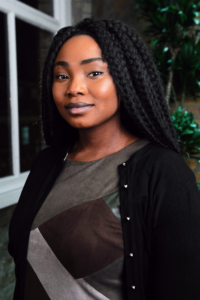 Stephanie Itimi: One word I would use to describe my experience of working would be ‘peculiar’. This is because as a Black person living in the UK and working on statistics, I am in the minority. This is also true of the wider workplace, unless you work for an organisation specifically focused on the Black population.
Stephanie Itimi: One word I would use to describe my experience of working would be ‘peculiar’. This is because as a Black person living in the UK and working on statistics, I am in the minority. This is also true of the wider workplace, unless you work for an organisation specifically focused on the Black population.
Feeling different at work may be challenging, but it does not always have to be a bad thing. Having your foot in the door enables you to open that door for others. This means speaking up or working on initiatives to help be a solution to the problem you see.
Right now, I’m wearing two hats. I am a first-year Information Security doctoral candidate at Royal Holloway’s Cyber Security for the Everyday programme. I’m being trained on both the technical and non-technical side of cybersecurity before I write my research thesis, which will be on the loopholes in Nigeria’s data protection and privacy laws and how they could be exploited.
My second hat feeds into my passion for the diversity, inclusion and economic development for ethnic minority women. I am the founder of Seidea, a career-development platform with a social mission to diversify the cybersecurity industry. We support over 600 Black and minority ethnic women around the globe in their entry into the cybersecurity field through online courses and virtual internships.
My favourite project so far was starting a Google CS-First Club, for nine to 16-year-old Black and minority ethnic girls, at my local library. The programme teaches young girls how to code and builds up their confidence through animated storytelling. Using Scratch, Google CS-First club introduces students to programming through fun video game development.
This project is important to me because I didn’t get the chance to meet women in Computer Science who looked like me when I was growing up, and that’s one of the reasons I didn’t pursue a first degree in CS. I hope that seeing people like them demonstrating what it’s possible to achieve, especially in areas where these programmes are not common, will encourage more girls into the field.
The women who inspire me are people like Dambisa Moyo and Ngozi Okonjo-Iweala, due to their trailblazing economic ideas and their ability to overcome the barriers they faced in their careers with poise and integrity.
I am also inspired by women who have been pivotal in my own career. Busola, my first mentor who taught me how to navigate working in government and public service. Ibukun, who continues to be a great sounding board for my career in cybersecurity and entrepreneurship. These women have countless times spared their time to speak with me, and share their stories and lessons learned. This is why I’m so passionate about giving back my time and being a listening ear to women who want to transition into cybersecurity.
Being different or peculiar has its ups and downs. It can be lonely and exhausting if you feel that you are consistently not fitting in, which is why I would always advise everyone to join a union, to protect your labour rights and also help if you have been bullied, discriminated against or treated unfairly. And community groups, either at work or outside: Meetups are a great source for networks, while employee networks are a great source for a community at work.
In a lot of the spaces I operate in, I am the only minority or young person, and sometimes that causes me to have self-doubt. However, what I have learned is that I am only an expert in my story. I bring a different perspective to a problem and task based on my experiences and this is precisely what makes me valuable. When I started realising my value, it removed a lot of the self-doubt. To young Black women wanting to make a career in computer science, I would say: ‘Understand that your authenticity is your unique selling point.’
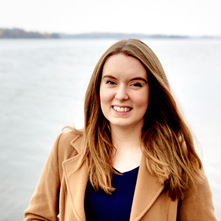 Jenny Brennan: I taught myself to code as a kid, and spent my teens building websites for people locally, but had no idea there were long-term opportunities in tech until I was studying social sciences at university and met people who were going to hackathons and working at start-ups.
Jenny Brennan: I taught myself to code as a kid, and spent my teens building websites for people locally, but had no idea there were long-term opportunities in tech until I was studying social sciences at university and met people who were going to hackathons and working at start-ups.
Having spent some time in start-ups working on projects ranging from chatbots to software for kids to learn to code, and at Twitter as a software engineer, I found the most important challenges were the ones at the intersection of technology and social science. So now in my work at the Ada Lovelace Institute, I try to bridge those worlds; to make sure data and AI work for people and society.
Something that’s meant a lot to me has been teaching others to code, and supporting people making career changes into tech. I think I’ve taught over 500 women and girls, and it blows me away and feels like a real honour to see women who were on beginners Code First: Girls courses five years ago as senior software engineers
I never knew about Ada Lovelace growing up – or indeed any women in computing! Now I know her story, it’s exciting to see it shared and to reiterate that women have been involved in computing all along. At the same time, the idea of her pioneering and prescient work on programming, written when the idea of a modern computer was only theoretical, being described as “with Notes from the Translator” feels disappointingly resonant for too many underrepresented people in tech today.
But I’m motivated by the work of incredible women working to make tech more just and equitable. Work like Gender Shades, by Joy Buolamwini and Timnit Gebru, Automating Inequality by Virginia Eubanks and Race After Technology by Ruha Benjamin, but also the often tireless and thankless work many of these women do behind the scenes to make change.
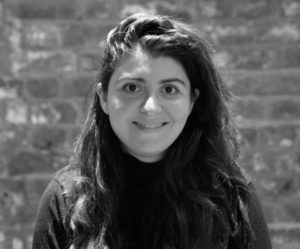 Rula Awad: Ada Lovelace has meant quite a lot to me for a long time. At school we had to choose a role model to present on, during an assembly, and I chose Ada Lovelace, I wanted to be just like her, because we were both good at maths. Her father, Lord Byron, was a poet. I liked that she didn’t follow tradition or her family. She was obviously strong-minded and a free thinker. And, of course, she pioneered in a male-dominated field.
Rula Awad: Ada Lovelace has meant quite a lot to me for a long time. At school we had to choose a role model to present on, during an assembly, and I chose Ada Lovelace, I wanted to be just like her, because we were both good at maths. Her father, Lord Byron, was a poet. I liked that she didn’t follow tradition or her family. She was obviously strong-minded and a free thinker. And, of course, she pioneered in a male-dominated field.
There are countless other women who have pioneered in some way and don’t quite get the recognition that they deserve. And of course, sometimes it works the other way around – I was always sad that Charles Babbage got most of the recognition for Ada’s work. We still have to work towards creating a society where that doesn’t happen.
I see anyone who has overcome adversity with grace and humility to better themselves as a role model. There are so many unsung heroes walking around. It’s only when you hear someone’s story you really appreciate how far they have come.
My journey into the AI and disinformation space started at a really young age. I was always interested in how things worked, when growing up, whether it was technology, society, people, etc. I took apart our first computer as soon as we got it because I wanted to see the ‘chips’ it was made of. (I thought they were actually chips!) Now I am an AI product manager, which means I build products using machine learning (ML). Right now, my team is are using natural language processing (NLP) to identify information threats intended to sabotage voting in the upcoming US Presidential election.
I’m also working to apply this technology to combatting disinformation and misinformation around COVID-19. The pandemic is a difficult problem from a fake news point of view, because the stakes regarding correct information are a matter of life or death, but even the experts disagree with one another. That said, there are some clear fake news stories floating around: COVID-19 is not a conspiracy by Bill Gates to inject microchips into the population via vaccines, for example.
I’m also the Women in AI (WAI) Ambassador in the UK, which aims to bring gender inclusivity to AI and technology. We do this by building communities, organising events, talks and educational activities. I founded the organisation while studying machine learning at UCL because I felt there wasn’t much female representation on my course.
The best project I worked on was my MSc thesis, which came out of observing the online behaviour of my dad, and how his media consumption differed markedly from mine and my generation’s. I realised that there was a disconnect between the generation building technology and the generation using it. Even more importantly, there was a power vacuum in this space, which was ripe for manipulation. It was obvious we were heading towards a crisis of trust in traditional media as a result of uncontrolled information online and the lack of verification structures.
I had to persuade my supervisor, who had one of the best NLP teams in the world, to take me on as a student. It was before ‘fake news’ was a big thing; before the election of Trump and the Brexit referendum. He wasn’t convinced by my topic choice and didn’t have much interest in the social sciences or the media, and certainly wasn’t interested in the problems caused by social media! I had to persuade him that it would be groundbreaking to start applying NLP to build metrics to gauge media bias.
I won a grant from the European Union to build on, and commercialise, this work. And what I realised was that the work I did during my thesis laid the foundations for much of the work I currently do now in the anti-fake news space and the wider ML. This was some years before big platforms such as Facebook and Google started working to solve these problems.
I would tell my younger self, ‘Everything is doable, but it takes time and commitment. Before embarking on any journey, have confidence and conviction in what you do and what you’re about to do. But most of all, have fun because life also takes unexpected and positive turns!’
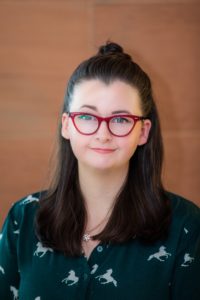 Lesley-Anne Kelly: I learned about Ada Lovelace when I first started learning to code. I remember filing it away at the time as yet another example of an overlooked woman in history.
Lesley-Anne Kelly: I learned about Ada Lovelace when I first started learning to code. I remember filing it away at the time as yet another example of an overlooked woman in history.
When I started getting really into data visualisation I began a bit of a love affair with Florence Nightingale. To many, she was a nurse, and to others, she was the first woman to be admitted into the Royal Statistical Society. To me, she was a badass data visualisation pioneer. Whenever I’m muttering under my breath about messy data from a Freedom of Information (FOI) response, I always try to wonder about the kind of data she was working with when she was creating the iconic chart on the causes of mortality in the army, and then I realise I don’t have it so bad!
My favourite data to work with each year is the National Records of Scotland (NRS) release of all the baby names used in Scotland. It’s just pure joy and I find it a fascinating insight into current trends. The most challenging and rewarding data to work with, however, has definitely been the COVID-19 data. I built The Courier’s tracker page in March and not a day has gone by since then when I haven’t looked at the figures.
I essentially had ten lost years in my twenties – both personally and professionally – due to crippling chronic pain and frequent operations. When you’re looking through a fog of pain, everyday career advancement is pretty impossible. Once my health stabilised I had a sudden awakening that I hated what I was doing and started looking for something new.
I saw an advert for a Data Analyst role at DC Thomson and apparently in my interview I did a lot of rambling about current affairs. So instead of getting the job I applied for I ended up working in the newsroom in data journalism. My current job title is Data Editor. I work on stories that are data heavy, and I interpret the data and determine the best news lines. Then I work with the data to determine the graphical representation to best tell the story.
Absolutely nothing about my career path was in any way intentional. I do remember my first experiences with coding weren’t pleasant ones. There was definitely an assignment in university that involved an ANOVA analysis that very nearly tipped me over the edge, and I think because of that early experience I didn’t go back to coding for a long time.
When I was approached for this feature, my first feeling was confusion, as I don’t consider what I do to be particularly interesting or special. The second, more intrusive feeling, was – woman in STEM? I’ve always considered myself more STEM adjacent. This is in spite of the fact that I have a STEM degree, code every day, and have had ‘data’ in my job title for several years now. My biggest challenge now is a fairly serious case of imposter syndrome…
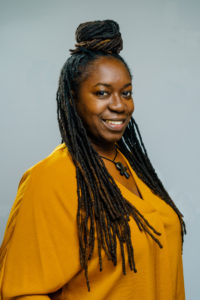
Siobhan OH Baker: I’ve heard Ada Lovelace’s story and am always impressed by individuals who significantly shifted something forward, especially when they haven’t realised how impactful it was within their own lifetime.
A few years into my career, I couldn’t quite understand how the roles I’d had and the subject I’d studied related to one another. I’d studied Textiles Design, grown from office management to data management in education, and then went on to study Philosophy. To me it felt like quite a jumbled path, but at each stage I followed the things which I felt I could do well, that really interested me, or that I wanted to learn more about at the time.
Looking back I can see all these previous experiences at play in the work I do now, and increasingly I’m finding new ways to bring what felt like loose threads together. Technology is pretty powerful, especially when it’s being used in interesting ways by people solving the issues that really matter to them.
For me personally, the most impactful female role models (outside of family members) have been the women I’ve met, been encouraged by, or who’ve inspired me along the way. Without reeling off an endless list of names, some key inspirations of mine are Charlene Hunter, Founder of Coding Black Females, Ari Melenciano, Founder of Afrotectopia, Dr Shola Mos-Shogbamimu, political activist, and Zahra Davidson, Co-Founder of Enrol Yourself.
Community is so important, and I would urge anyone to find their pockets of supporters. Without communities like Coding Black Females, YouEqualTech, Code First Girls and Ada’s List I might not be where I am now, or have been able to learn all the great things I’ve learned through their events.
My advice to my younger self would be to trust the journey, and to follow the things which you find super-interesting and just can’t let go of. Ultimately, when you stay curious and keep feeding that curiosity with new ideas/information, you’ll always end up exactly where you’re supposed to be.
Returning to Wendy Hall, Chair of the Ada Lovelace Institute, for the long view of women in computing:
‘I came to Ada Lovelace through learning about a programming language called Ada back in the day. At that point no one had heard of Ada Lovelace, people just knew Charles Babbage, who designed the Difference Engine – the ‘hardware’. Ada had the insight to be able to think about how you could programme it. It’s great that Ada Lovelace is now a household name – and probably more so than Charles Babbage these days – but there have been and are so many amazing women in computing, like Steve Shirley and Karen Spärck Jones, who was the one of the key people in information retrieval and speech recognition – all the early foundational work that the search engines we use today are based on. During my early days in computing the only women who had name recognition were Ada and Grace Murray Hopper, the inventor of COBOL and the term ‘bug’, and to some extent that is still the case. So it’s fabulous that Ada is recognised, and used now to represent the women in computing movement. It’s so important that on Ada Lovelace Day we celebrate all the women in computing, past and present, around the world.’
Rula Awad (@rula_awad) is a machine learning expert specialising in mis/disinformation, synthetic media and voice. She has built natural language processing prototypes for tech start-ups, and worked for an IT consultancy where her clients included the UK Ministry of Defence, the BBC, UBS and HSBC. She has worked as an analyst for a private equity firm and received grants from the European Union for her own media transparency platform. She has an MSc in Machine Learning, is a World Economic Forum Global Shaper and the UK ambassador for Women In AI. She is also interested in machine learning applications to healthcare, biotech and neuroscience.
Siobhan OH Baker (@sohbaker) first entered the tech industry in 2017, as the Community Manager for a social enterprise aiming to get more women into careers in tech. In 2018 she took a coding internship through Black Girl Tech and 8th Light, which was instrumental in preparing her for her current role (still with 8th Light) in full-stack software development. Outside work, Siobhan is part of the Leadership Team for Coding Black Females, a non-profit which supports Black females aspiring to and/or working in tech. She is also actively questioning how to blend her interests in art, philosophy and coding.
Jenny Brennan (@jennyhbren) is a researcher at the Ada Lovelace Institute working on methods for assessing impact of or inspecting algorithmic systems, and the use of algorithmic decision systems in the public sector. Previously at Twitter, she designed the Ada Hashflag that launches on Ada Lovelace Day 2020 and is a strong advocate for diversity in tech.
Dame Wendy Hall (@DameWendyDBE) is Chair of the Ada Lovelace Institute. Her day jobs are Regius Professor of Computer Science and Executive Director of the Web Science Institute at the University of Southampton. She is also Executive Director of the Web Science Trust, a global network of labs.
Stephanie Itimi (@Afrocheri) is a PhD research student in Information Security, based within the Centre for Doctoral Training in Cyber Security at Royal Holloway, University of London. She is also the founder of Seidea, an online school with a social mission of upskilling one million Black and minority ethnic women for careers in cybersecurity by 2040.
Lesley-Anne Kelly (@L_A_Kelly) is the Data Editor at DCT Media and frequent contributor to the Stooshie podcast (@stooshiescot). Daily life involves wrangling and visualising data using a variety of tools, from spreadsheets to R. She is a native Glaswegian but now lives in Dundee with her husband Gary and their dog Reginald. She has very strong views on pie charts.
Related content
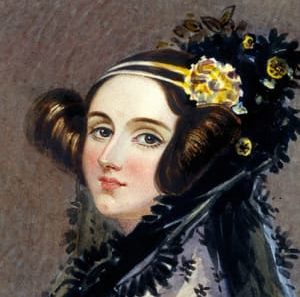
Celebrating Ada Lovelace Day: what Ada means to us
Celebrating the contribution to global culture of a remarkable woman: a curious visionary, poetical scientist and collaborative thinker.